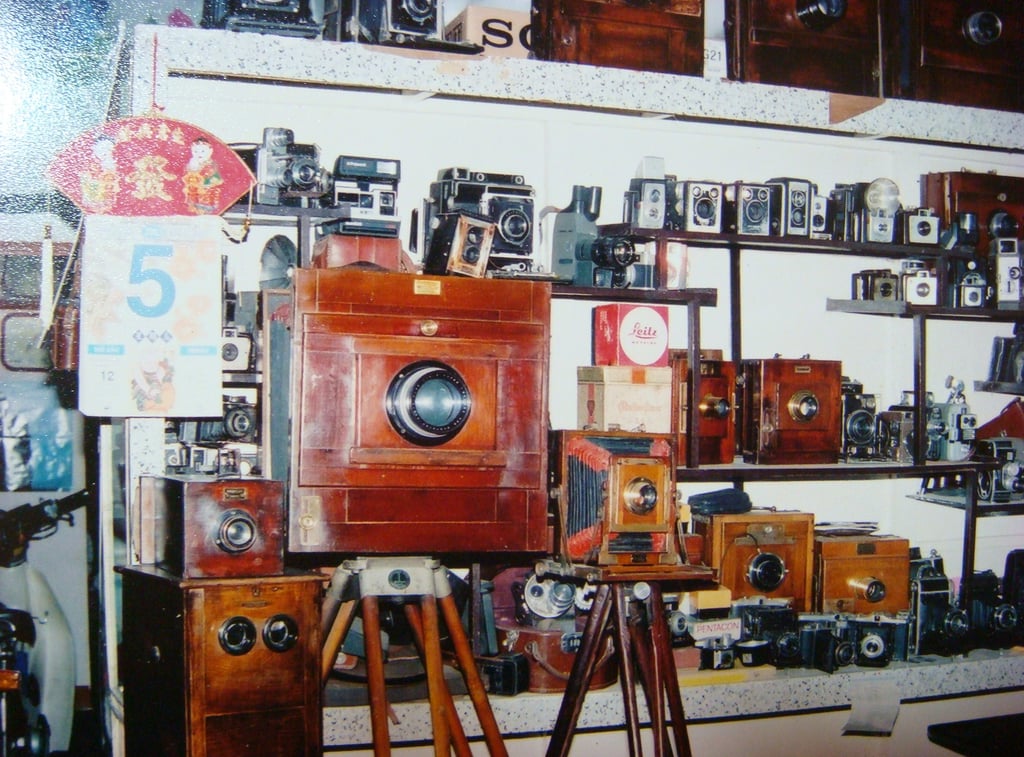History of Film Photography: From the Dark Room to the Digital Age
Photography has a long history, from early experiments to modern digital cameras. Inventors like Niépce and Daguerre pioneered early processes, while color photography and smartphones have made it more accessible. Photography has shaped society and empowered individuals.
FILM PHOTOGRAPHYSTORYTELLING


History of Film Photography:
photo by @diepnguyen31
Photography's journey has been marked by significant milestones, from early experiments to the digital age. Pioneers like Niépce and Daguerre laid the groundwork for modern photography, while the development of color processes and the rise of smartphones have made it more accessible and widely used. The evolution of photography has had a profound impact on society, shaping our understanding of the world, documenting historical events, and empowering individuals to express themselves creatively.
The Dawn of Photography: The Camera Obscura and Early Experiments
The concept of capturing light-based images dates back to ancient times, with the Chinese philosopher Mozi describing the principle of the camera obscura in the 4th century BC. This dark chamber with a small hole allowed light to project an inverted image onto the opposite wall. While not technically photography, it laid the foundation for future developments.
The first documented attempts at capturing images using light-sensitive materials came in the 18th century. Johann Heinrich Schulze experimented with silver nitrate solutions, creating temporary images of objects exposed to sunlight. Thomas Wedgwood, a British scientist, continued these experiments, but his images were also unstable and faded quickly.
The Birth of Modern Photography: Niépce and Daguerre
In 1826, Nicéphore Niépce, a French inventor, succeeded in capturing the first permanent photograph. He used a pewter plate coated with bitumen, a light-sensitive substance, and exposed it for several hours in a camera obscura. The result was a crude image, but it marked a significant milestone in the history of photography.
Niépce partnered with Louis Daguerre, a French artist, to refine the process. In 1839, they announced the invention of the daguerreotype. This process involved exposing a silver-plated copper plate to iodine vapor, then to light, and finally developing it with mercury. Daguerreotypes were highly detailed and popular, but they were fragile and difficult to reproduce.
The Process of Taking a Daguerreotype
The daguerreotype process was very complex and time-consuming. It took several hours to create a daguerreotype photograph.
First, a silver plate was polished until it was perfectly smooth. Then, the plate was exposed to iodine vapor for a period of time. This created a thin layer of silver iodide on the surface of the plate.
Next, the plate was exposed to light in a camera for a period of time. The silver iodide decomposes when it is exposed to light, creating a latent image on the plate.
Finally, the plate was developed in a solution of silver nitrate. This caused the latent image to become visible as a dark image on the plate.
The Rise of Negative-Positive Photography: Talbot and Others
William Henry Fox Talbot, an English inventor, developed an alternative process in 1839. His "calotype" used paper treated with silver nitrate and iodide, creating a negative image that could be used to produce multiple positive prints. This breakthrough paved the way for more practical and accessible photography.
Other early photographic processes emerged in the 19th century, each with its own unique characteristics and limitations. The collodion process, invented in 1851, offered faster exposure times and the ability to create negatives on glass plates. The wet-plate process, while cumbersome, produced high-quality images.
Early Photography Processes:
Cyanotype Process
Collodion Process
Albumen Prints
Platinum Prints
Color photography was a long-standing challenge for early photographers. While black and white photography dominated for decades, the desire for color images persisted. The first practical color processes, such as the Autochrome invented in 1907, were complex and expensive.
The 1930s saw significant advancements in color photography. Kodak's Kodachrome process, introduced in 1935, used a layered emulsion to capture color information. Other color processes followed, including Agfacolor and Ektachrome, making color photography more accessible


History Of Color Photo Film
The evolution of color photography from hand-colored prints to digital marvels has been marked by innovation and perseverance. Key milestones include Maxwell's color synthesis experiment, the Autochrome process, and the development of integral tripack films like Kodachrome.
Key Dates of History of Film Photography
1826: Nicéphore Niépce takes the first permanent photograph using a process called heliography.
1839: Louis Daguerre invents the daguerreotype process.
1841: William Fox Talbot invents the calotype process.
1851: Frederick Scott Archer invents the wet plate collodion process.
1871: Richard Leach Maddox invents the dry plate process.
1888: George Eastman introduces the Kodak Brownie camera, the first affordable roll film camera.
1907: The Autochrome process is invented, the first practical color photography process.
1935: Kodak introduces Kodachrome, the first commercially successful color film.
1990s: Digital photography begins to challenge the dominance of film photography.
Key Figures in the History of Film Photography
Nicéphore Niépce
Louis Daguerre
William Fox Talbot
Frederick Scott Archer
Richard Leach Maddox
George Eastman
Edwin Land
Steven Sasson
The Digital Revolution: From CCD to CMOS
The late 20th century witnessed a seismic shift in photography with the rise of digital technology. Charge-coupled devices (CCDs), originally developed for space exploration, were adapted for use in early digital cameras. These cameras, though bulky and expensive, captured images as electronic data, eliminating the need for film development.
The 1990s saw a surge in consumer digital cameras, with companies like Kodak and Sony introducing more affordable and user-friendly models. The development of complementary metal-oxide-semiconductor (CMOS) sensors in the 2000s further reduced costs and improved image quality.
